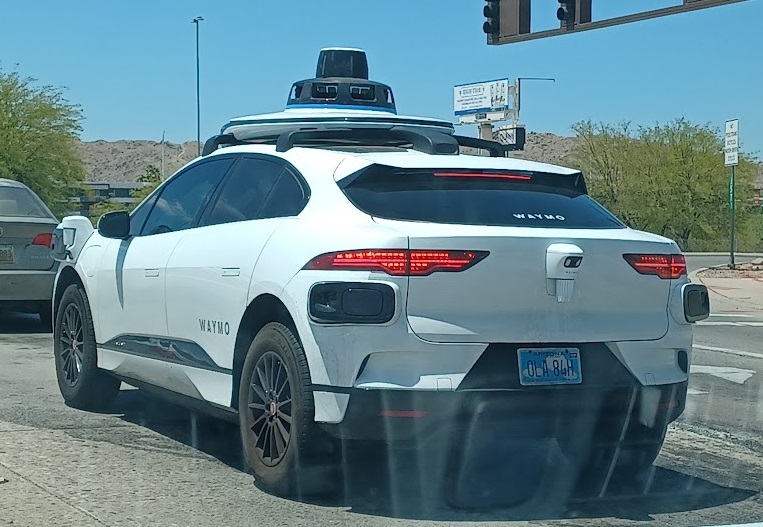Waymo established an operation in Chandler 6 years ago (2017). I don't know how many cars it had, but I immediately saw their cars running all over town, even in my residential neighborhood which is not close to their Chandler garage.
Ever since, every time I made an errand, I ran across one or two Waymo cars: Chandler, Tempe, Mesa, Phoenix, mainly the east side of Metropolitan Phoenix. I don't know the territory of their testing ground, but two years ago when they announced a trial of rides to the public, I went on the map and saw that the geo-fenced area for public ride was quite small. In fact, it did not even extend to my home. These guys wanted to play it safe.
Waymo had a presentation of the original sensor suite, and I was able to correlate that with what I saw back then. Besides the main 360-deg lidar and forward-looking cameras mounted on the top, they used to have a small rotating lidar for the rear looking down at the ground right behind the car, a chin-mounted lidar looking down from the front bumper, lidars at the corners of the car. There were vision cameras too besides the main forward looking cameras, looking at the ground all around the car. There were also radars, ultrasonic sensors all around the car. A heck of a lot.
Over the years, I saw several evolutions of their sensor suites. I happened to be able to capture a photo of the latest Waymo car just 2 days ago. It's significantly different from what I saw initially.
There's still a top lidar on top of the roof dome. Underneath the lidar are 6 roof-mounted cameras to cover 360 degrees. Looks like there are fewer sensors now. What's weird is an inverted corrugated cone mounted on the rear trunk lid, above the license plate. There's a cone like that on the fender. I wonder what that could be.
They kept testing and testing, without much exciting stuff to report. And their sensor suite kept changing. I slowly lost interest, until I captured the posted photo. There was a driver in the car. I could not tell if there were passengers.
Just now went on Waymo Web site. They have extended the operation for public ride hailing to 225 sq.mi. of the Phoenix metropolitan area. And the area includes Old Town Scottsdale now.
Waymo is also doing something in other cities, but as mentioned I have not been following this. But recently, I saw a Cruise car. Yes, the Cruise robotcars that have been testing in SF, starting at about the same time Waymo started here.


